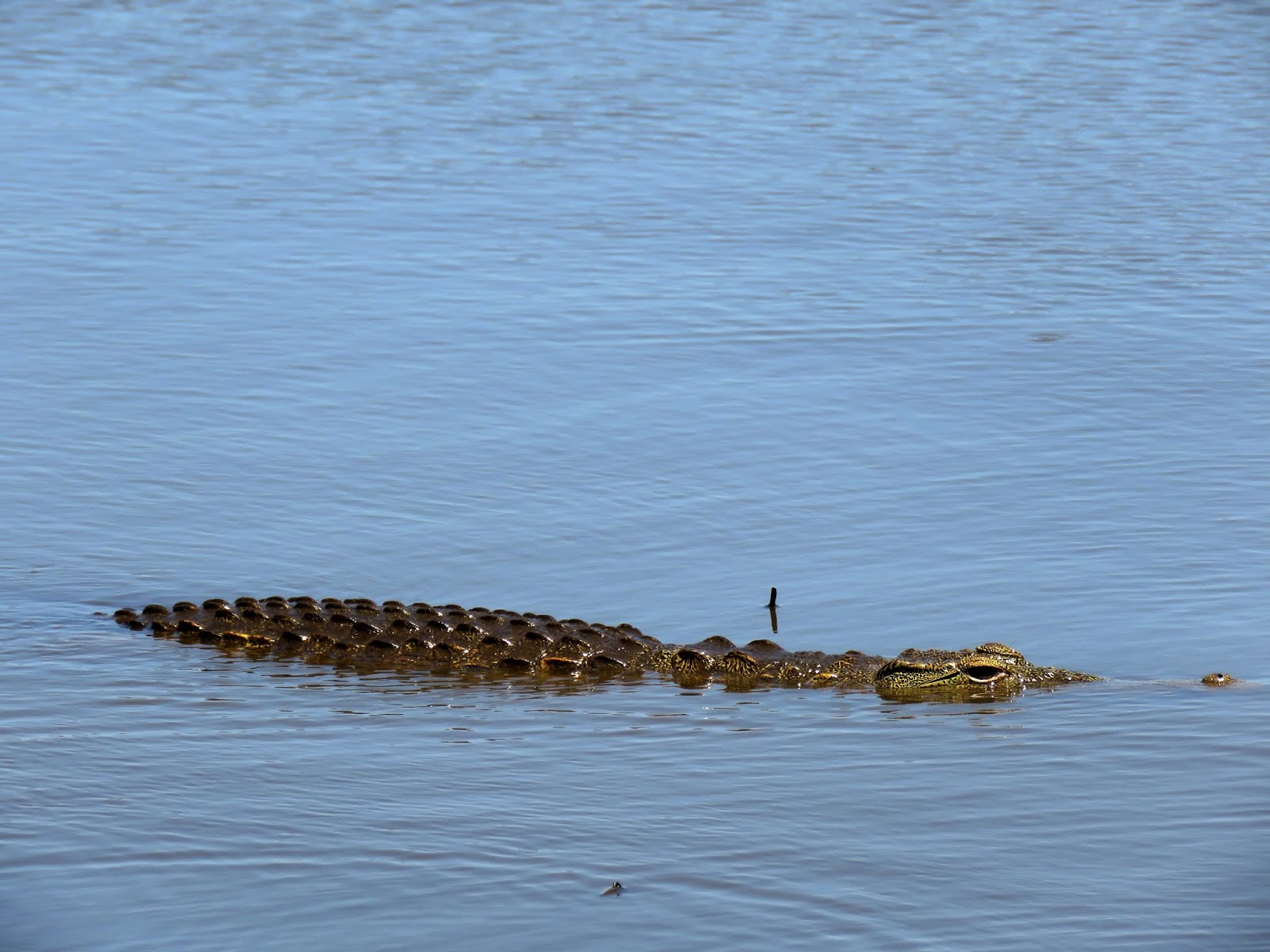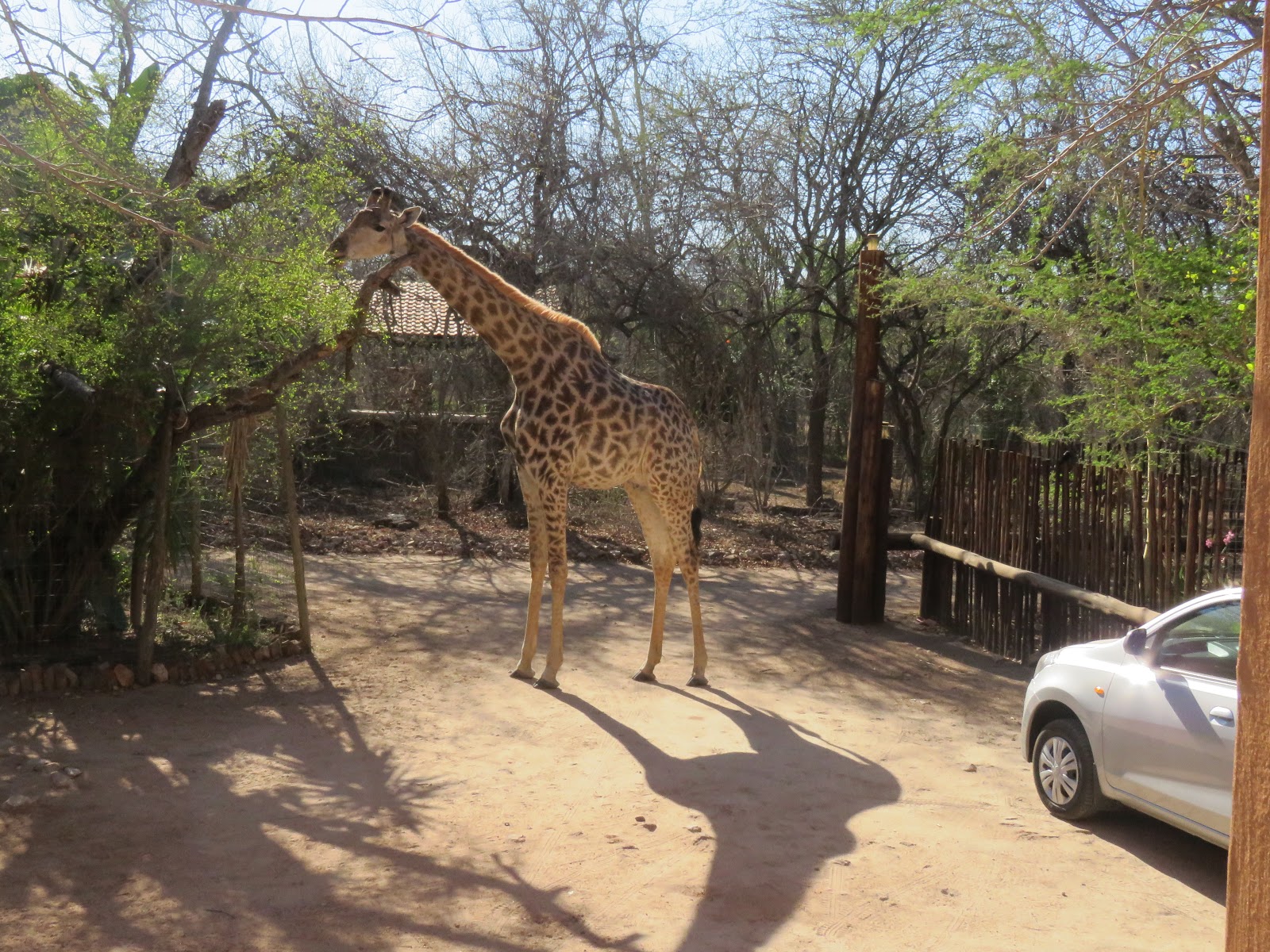 |
| Giraffes are constantly on guard for predators, especially when it’s time to drink when they become vulnerable in a bending position. |
“Sighting of the Day in the Bush”
 |
| The convoluted photo is difficult to decipher at first. Note the one kudu attempting to eat the seeds in the birdfeeder, which she eventually accomplished. |
While Tom was taking a short nap while I stayed at the table on the veranda finishing the daily post, I took a peek at the Marloth Park River Sightings page on Facebook to see if anyone had posted information regarding exciting sightings.
Alas, a frequent FB poster mentioned a leopard had been sighted 90 minutes earlier at the end of Swartwitpens, where it meets the river road. Such a sighting may result in disappointment if too much time has passed and the animal has moved on.
 |
| Giraffes often head to the river to drink. |
I deliberated if I should awaken Tom, but he never sleeps more than 20 minutes, so I waited until he exited the bedroom to mention the sighting. Within two minutes, we were in the little car and on our way.
Once we arrived at the location, we noticed only one other car, which could indicate the leopard was gone from view. Fortunately, we met a lovely couple from Nelspruit who lives part-time in Marloth Park, Estelle, and Johan.
We’d never have been able to spot the leopard without their help. It’s funny how people try to explain where to look to spot the animal of interest at the moment.
 |
| Giraffes adopt a variety of stances to gain access to the water. |
Nature has provided the ideal camouflage for wildlife, often making it nearly impossible to see certain animals lying under trees or bushes from the distant fence at Marloth Park across to the opposite side of the Crocodile River.
Rarely, when there is any sighting, friendly observers often assist others in finding the animal’s location. It goes like this, “See the two green trees over there with a dry bush between them? The lion is lying at the base of the tree on the left.” This is usually what seems to be an accurate description.
 |
| There were four giraffes in this tower. |
However, there are dozens of green trees and dry bushes across the river, and even if one points in the correct direction carefully, the animal is often challenging to see.
Both Tom and I have noticed a difference in the way men describe where the animal is located instead of women. When Tom and Lois were here, my Tom would provide a lengthy description explaining where the lion was found.
On the other hand, when Lois described it, she did so with few words, and often, I was more easily able to comprehend the few words as opposed to the lengthy, detailed description.
 |
| They were stopping to check their surroundings. |
We’ve noticed this phenomenon on other occasions when asking for assistance; regardless of what many people want to believe about the sexes thinking alike, it’s natural for women and men to have different perceptions and responses.
We see this in nature by the erratic behaviors of female and male animals that stop by. For example, the male bushbucks are shy and constantly on guard, whereby the females easily approach us without hesitation.
 |
| A lone hippo grazing by the river. |
The male kudus with their big horns are bossy and determined, whereby the females are more docile and quick to approach us. I could go on and on regarding the erratic behaviors of the sexes of wildlife after we’ve spent the past nine months observing them every day.
It’s always a challenge, regardless of who is describing where the animal is located, to find it, focus the camera for such a long distance resulting in a good photo.
Yesterday, at the river, I couldn’t spot the leopard, but Tom did so in minutes after Johan described the location to him in several paragraphs. I was stymied. Nonetheless, Tom was able to take the two very distant photos we’re sharing here today.
 |
| Only the spots confirmed this was a leopard lounging under a tree a long distance from the fence between Marloth Park and Kruger. |
We’re disappointed in the lack of clarity in the photo, but this leopard may easily have been a good kilometer from us. Our skill nor our cameras were capable of obtaining better shots.
The more explicit photos we’ve seen on Facebook of yesterday’s leopard sighting were acquired with long-range lenses, which are too heavy and we’ll never be able to carry throughout the world with us.
 |
| We waited patiently while chatting with a lovely couple we met at the fence, Johan and Estelle, who said they’ve been reading our site. |
It’s one thing to have such a camera set up at home and use it now and then for special shots. It’s another thing to have the heavy beast everywhere we go…totally impractical.
This morning we headed to Komatipoort to shop for Saturday’s upcoming Thanksgiving dinner party. On the way to Spar, we stopped for breakfast at Stoep Cafe for another fine breakfast and idle chatter.
Now back at the house, everything is put away, and we almost have everything we’ll need. On Thursday, we’ll return to complete the shopping balance after our teeth cleaning and eye doctor appointments.
Have a spectacular day!
Photo from one year ago today, November 12, 2017:
Tom took another excellent distant shot of a bird we couldn’t identify online. Costa Rica neighbor and bird enthusiast Charlie identified this bird as a Clay-colored Thrush or Yigüirro in Spanish. For more photos, please click here.
















































































































